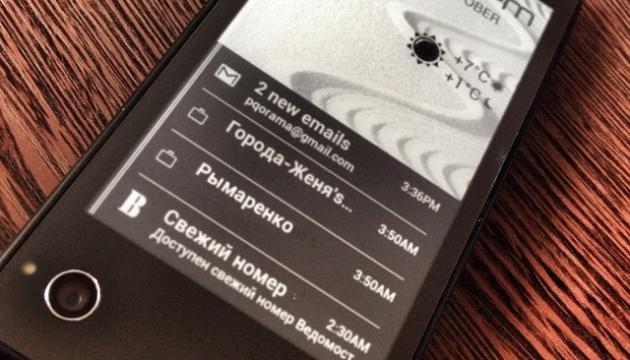Brief Summary:
Product: YotaPhone Smartphone (1 & 2)
Company: Yota Devices
Country: Russia
Period: 2013-2019
Essence: Smartphone with two screens: a color LCD/AMOLED and a black-and-white E Ink.
An innovative product with a unique concept that received initial recognition but failed commercially due to high price, competition, and difficulties in market penetration. The developer company went bankrupt.
Origin Story
The idea for YotaPhone was born within the Russian company Yota Devices as an answer to the main "pain point" for smartphone users – the quickly draining battery. The concept was simple and elegant: add a second, always-on screen using E Ink technology (electronic ink), which consumes power only when the image changes. The first prototype was shown in 2012, the first model hit the market in 2013, and the significantly improved second version, which received numerous awards (including "Best of CES"), was released at the end of 2014. The project was positioned as a unique Russian product capable of competing in the global market.
How it Works
The main feature – two screens:
- Main Screen: Standard color LCD (in the first version) or AMOLED (in the second) for regular tasks – apps, games, video.
- E Ink Screen: Located on the back panel, a black-and-white electronic ink display. It could constantly display information (time, weather, notifications, stock quotes, calendars), be used for reading books (comfortable for the eyes, like a paper book), display static images (tickets, maps, shopping lists) with almost no power consumption. Special software allowed "mirroring" or transferring specific applications and content to the E Ink screen.
The idea was to use the energy-efficient second screen most of the time, extending the battery life on a single charge.
Claimed Advantages
- Significant Battery Savings: The ability to perform many tasks (reading, viewing notifications) without turning on the main power-hungry screen.
- Comfortable Reading: The E Ink screen doesn't flicker and resembles paper, ideal for long reading sessions.
- "Always-On" Display: Important information (time, notifications) is always visible without needing to unlock the phone.
- Uniqueness and Innovation: Stood out from the crowd of similar smartphones.
- Personalization: The ability to display any image or widgets on the E Ink screen.
Why Did It Fail?
- High Price: At launch, the YotaPhone 2 cost as much as flagships from Apple and Samsung. Consumers weren't willing to pay that much for an experimental device from a little-known brand, even with a unique feature.
- Fierce Competition: The smartphone market is overcrowded, and breaking into it is extremely difficult, especially without strong marketing support and a developed distribution network.
- Software Limitations: Although the E Ink screen idea was good, its real usefulness heavily depended on software optimization and third-party developer support, which was often lacking. Not all applications worked correctly on the second screen.
- Unclear Necessity: For many users, the benefits of the second screen did not outweigh its cost and potential inconveniences. The battery savings were not critical enough to justify the premium price.
- Marketing and Positioning: The company possibly failed to clearly communicate the product's value to the mass consumer and build effective sales channels.
- Financial Difficulties and Bankruptcy: Yota Devices faced financial problems, attracted Chinese investors, but this didn't save the company from bankruptcy in 2019.
Ahead of its Time?
Yes and no. The concept itself, using E Ink to save power and provide comfortable reading on a mobile device, was progressive. But the execution and market timing were not quite right. The market wasn't ready to pay a high price for this specific innovation, and technological compromises (thickness, weight, software) made the product niche. Perhaps if it had appeared later, with more polished software and at a more affordable price, its fate might have been different. But by then, other methods of saving energy and larger batteries had emerged.
Can It Be Revived?
The YotaPhone brand itself and the developer company – no, they went bankrupt. Attempts to release YotaPhone 3 under Chinese management were unsuccessful.
However, the idea of using E Ink in mobile devices is not dead. It lives on in e-readers, some niche smartphones (often Chinese), and as experimental secondary displays on foldable smartphones or cases. But the YotaPhone form factor with a full E Ink screen covering the entire back panel has not become mainstream yet and is unlikely to do so anytime soon.
WTF Factor
- Two-Faced Phone: The very concept of a smartphone with a full second screen on the back was crazy and unique enough to cause a "wow effect".
- Russian iPhone Competitor? The ambition to create a globally competitive smartphone in Russia, especially with such a unique "gimmick", seemed very bold (and skeptical to many).
- Awards and Oblivion: The sharp contrast between the flood of international awards and rave reviews (especially for YotaPhone 2) and the subsequent rapid commercial oblivion and company bankruptcy.
- The Reading Phone: The ability to comfortably read books directly from the back cover of the phone – a rather specific, though interesting, use case.

